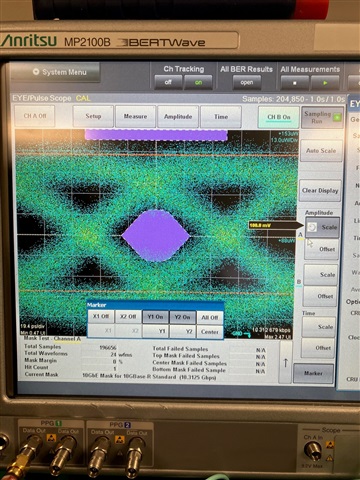I have a laser driver / TOSA combination and I am using an optical scope to look at the eye diagram for the TOSA output. I am getting an eye, but the lines defining the eye are very thick and I am getting an unacceptable BER (using an Anritsu MT-1000 analyzer). The question is, what are sources of the jitter that I am observing? Is it a termination issue? Is it settings of the laser driver? Is it layout? Is it all of the above?
I am looking for a methodical way to determine the specific problem so I can isolate and fix it. If you have any suggestions for diagnosing this issue please let me know.
Thank you,
Michael



